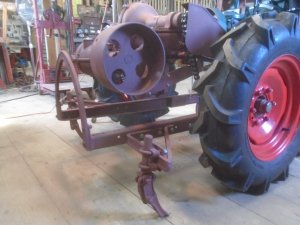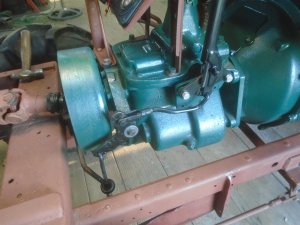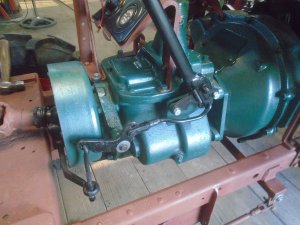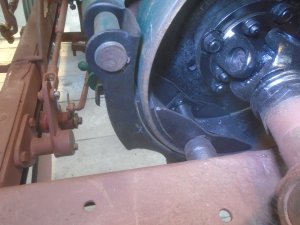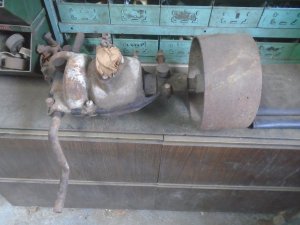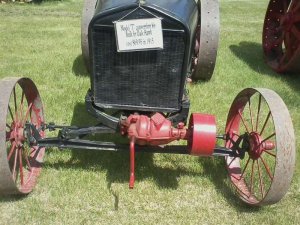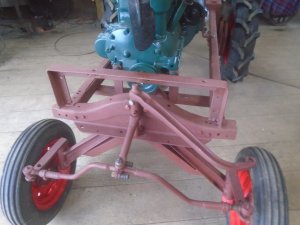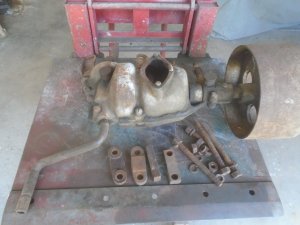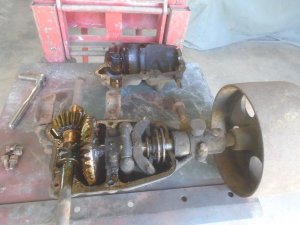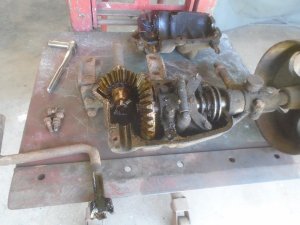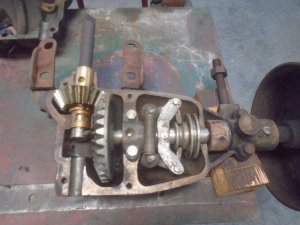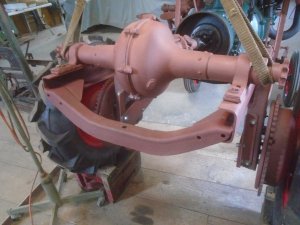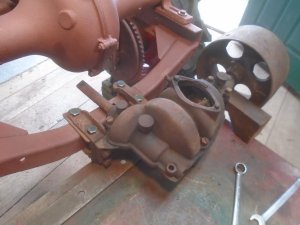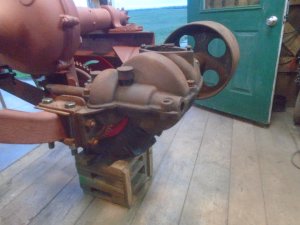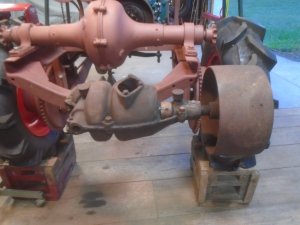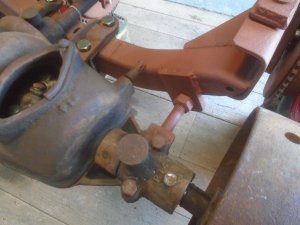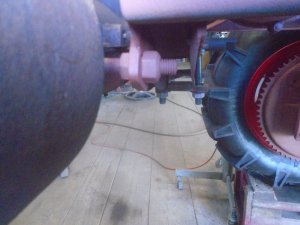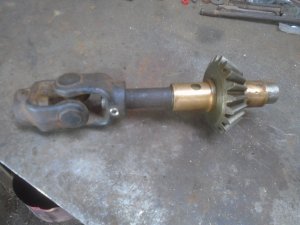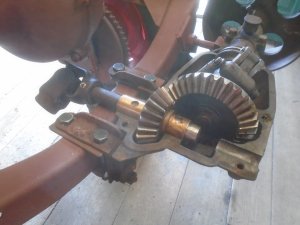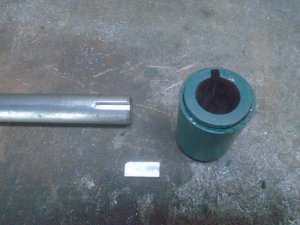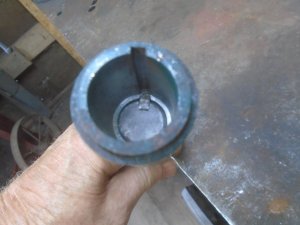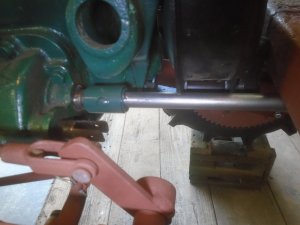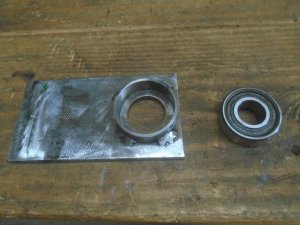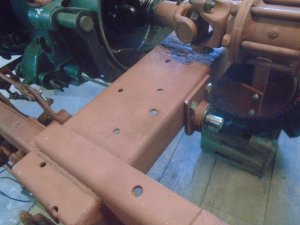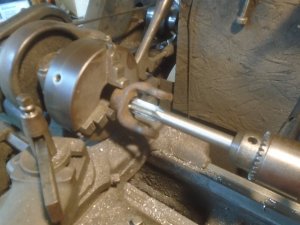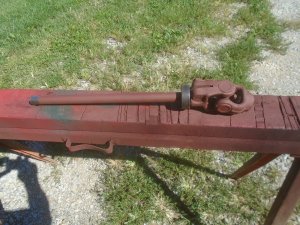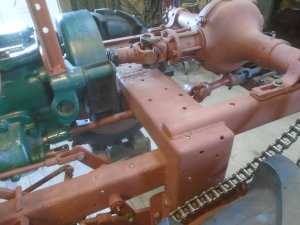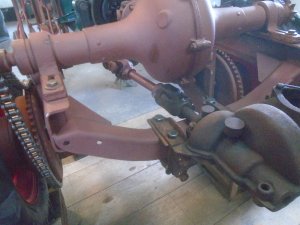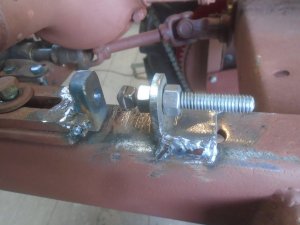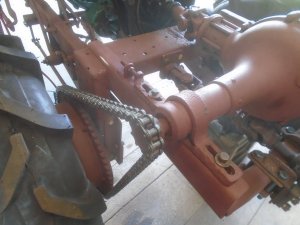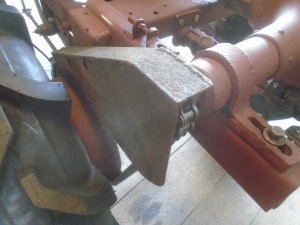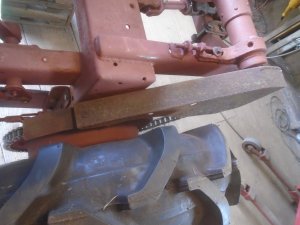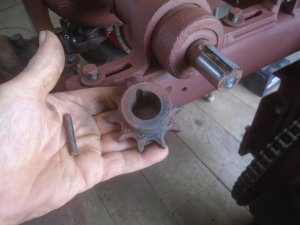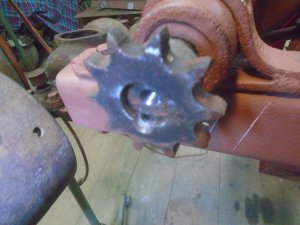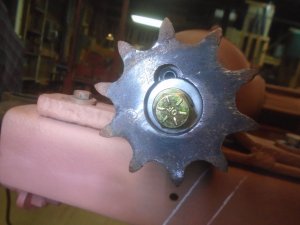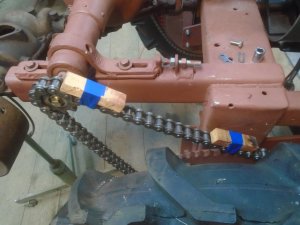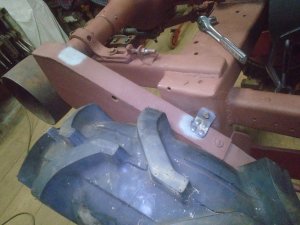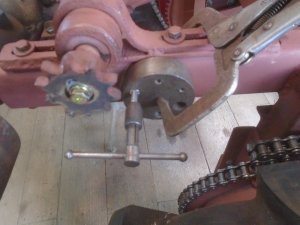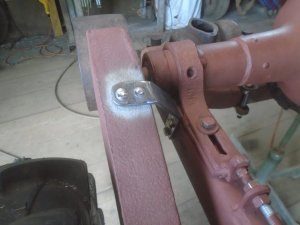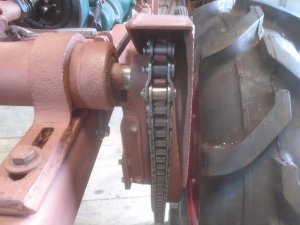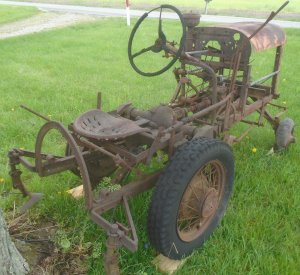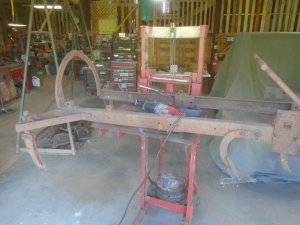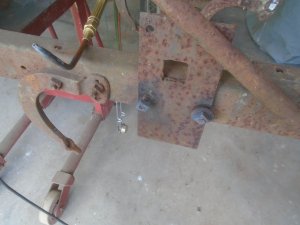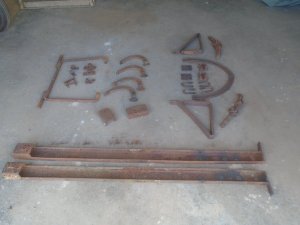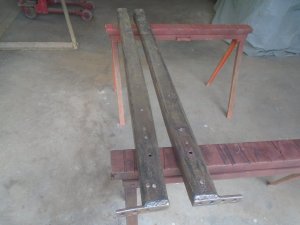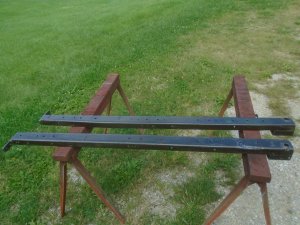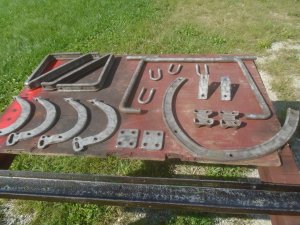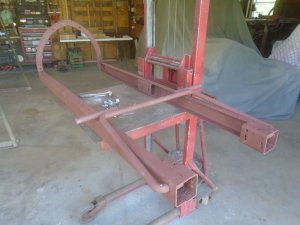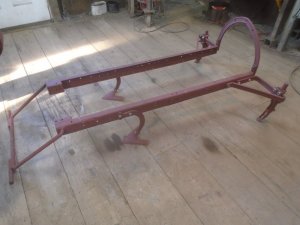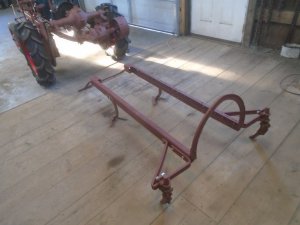When I added the flat belt pulley assembly to the back of the tractor, I knew that I would have to lengthen the cultivator frame so that the arch support on the back of it would clear the pulley housing. Before I could do that, I had to assemble the cultivator frame as is and set it under the tractor in order to be able to tell how much it needed to be lengthened.
I have the cultivator frame sitting so the arch support will clear the pulley housing. In this position, the rear cultivators are positioned far back from the rear wheels and would not fallow in the tire track on a tight turn.
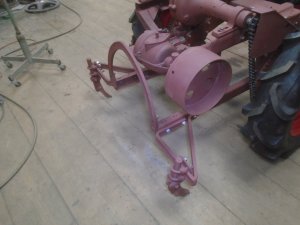
The front mount for the cultivator frame needs to come forward to about where the blue tape is on the side of the tractor frame. This would move the rear cultivators forward to their original position in relation to the rear tires.
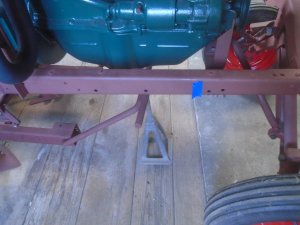
The cultivator frame is clamped down to the platform of the die cart and the rear cultivators and the arch support are removed. The mounting tabs for the arch support will be cut off the frame rails.
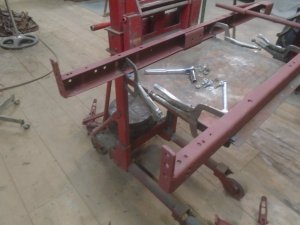
Luckily, whoever built this tractor used several pieces from another model-T frame for the supports in this frame.
This is a photo of the original tractor frame. I used the two cross pieces on the right to extend the tractor frame back and mount the rear axle on them.
I'm going to use part of the other two pieces that are sitting at an angle and holding the original transmission in place.
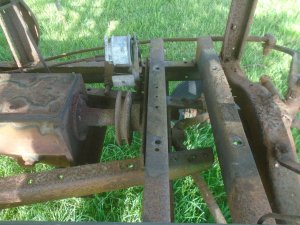
Here are those two frame pieces. They are both tapered about 1/2 inch from end to end so I will be cutting a section off each of them so they match.
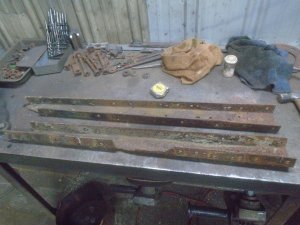
The frame needs to be extended out 7 inches. I cut the the extensions pieces at 11 inches so there is 3 inches of the frame extension that fits inside the end of original frame rails.
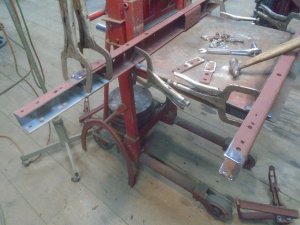
With the frame extensions welded in place, I bolted the rear cultivators back on and used a piece of angle to clamp across them to hold them in line. Then I welded the mounting brackets for the arch support to the ends of the frame rails.
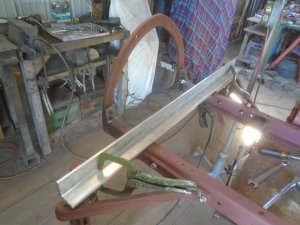
Now the front of the cultivator frame is sitting forward where it belongs.
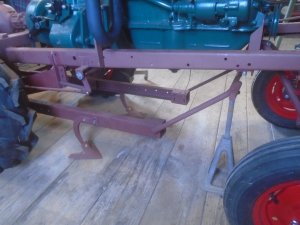
This puts the rear cultivators closer to the tires and still leaves about 1-1/2 inch clearance between the arch support and the pulley housing.
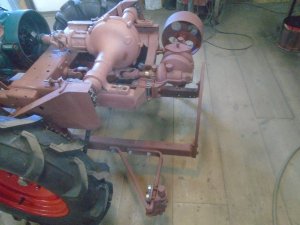
There is plenty of room to raise the cultivators off the ground and still have good clearance around the flat belt pulley.
I figure that when I'm using the flat belt pulley, I would most likely drop the cultivators down to the ground so that clearance would not be an issue anyway. Still, it's good to have it so the rear cultivator doesn't hit against the pulley while the tractor is being driven around.
